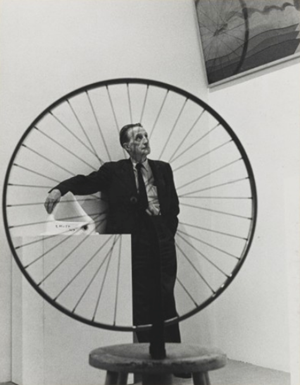
Most comprehensive exhibition on Marcel Duchamp to be presented in Asia commemorates the 50th anniversary of the artist’s death.
The exhibition will offer a chronological account of Duchamp’s life and art. The first section explores the period from 1902 through 1912, when he experimented with different avant-garde styles ranging from Impressionism to Symbolism and Fauvism. It concludes with his highly original engagement with Cubism and his life-changing decision at the age of twenty-five to abandon the painter’s craft and seek new ways of working. The second section examines the crucial interval between 1912 and 1917, when Duchamp pushed past the boundaries of painting as conventionally understood. It was during these years that he generated the ideas for his magnum opus, The Bride Stripped Bare by Her Bachelors, Even (also known as The Large Glass) (1915-23), and then embarked upon its construction after moving to New York. At the same time, Duchamp also created the first of his so-called readymades. Functional objects, such as his infamous sculpture Fountain (1917), were divorced from their utilitarian purpose and designated—as opposed to made—by Duchamp as works of art. The third section follows Duchamp in Paris during the decades of the 1920s and 1930s, then back to New York as an émigré during World War II. The last section explores the remaining decades of his life when Duchamp achieved legendary status in the art world. It reflects upon themes that had long preoccupied Duchamp, including the erotic as a doctrine, and the aesthetics of realism and illusion. The exhibition concludes with materials illuminating the production of his final work, a three-dimensional construction built around a life-sized mannequin of a female nude, Étant donnés.
Image on top: Duchamp at Museum of Modern Art's Art of Assemblage Exhibition (Standing next to urinal and behind bicycle wheel), 1961, Marvin Lazarus. Gelatin silver print, Image: 8 5/8 x 6 3/4 inches. Philadelphia Museum of Art: Gift of Jacqueline, Paul and Peter Matisse in memory of their mother Alexina Duchamp, 13-1972-9(412).

ArtDependence Magazine is an international magazine covering all spheres of contemporary art, as well as modern and classical art.
ArtDependence features the latest art news, highlighting interviews with today’s most influential artists, galleries, curators, collectors, fair directors and individuals at the axis of the arts.
The magazine also covers series of articles and reviews on critical art events, new publications and other foremost happenings in the art world.
If you would like to submit events or editorial content to ArtDependence Magazine, please feel free to reach the magazine via the contact page.